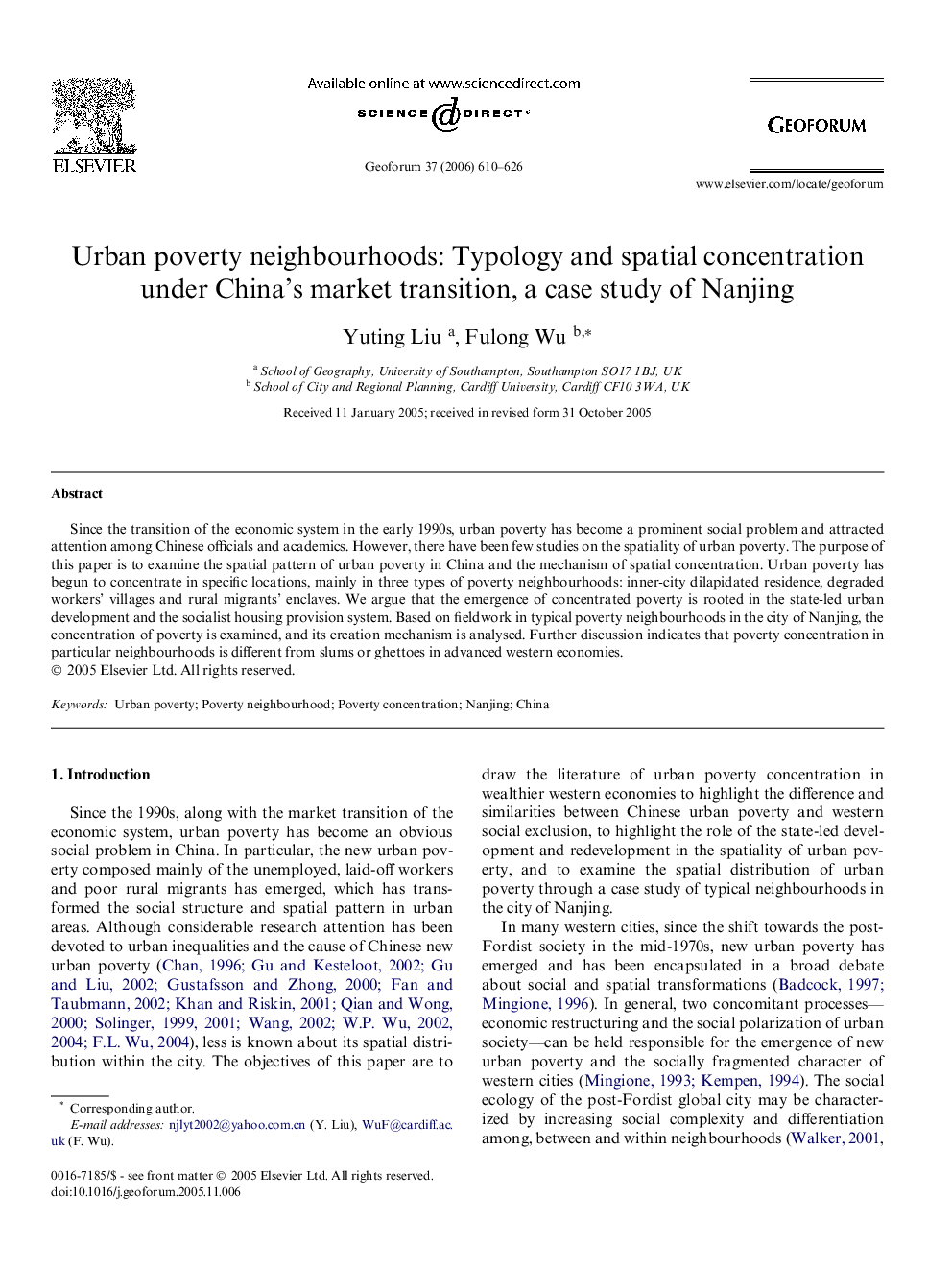| Article ID | Journal | Published Year | Pages | File Type |
|---|---|---|---|---|
| 5075156 | Geoforum | 2006 | 17 Pages |
Abstract
Since the transition of the economic system in the early 1990s, urban poverty has become a prominent social problem and attracted attention among Chinese officials and academics. However, there have been few studies on the spatiality of urban poverty. The purpose of this paper is to examine the spatial pattern of urban poverty in China and the mechanism of spatial concentration. Urban poverty has begun to concentrate in specific locations, mainly in three types of poverty neighbourhoods: inner-city dilapidated residence, degraded workers' villages and rural migrants' enclaves. We argue that the emergence of concentrated poverty is rooted in the state-led urban development and the socialist housing provision system. Based on fieldwork in typical poverty neighbourhoods in the city of Nanjing, the concentration of poverty is examined, and its creation mechanism is analysed. Further discussion indicates that poverty concentration in particular neighbourhoods is different from slums or ghettoes in advanced western economies.
Related Topics
Social Sciences and Humanities
Economics, Econometrics and Finance
Economics and Econometrics
Authors
Yuting Liu, Fulong Wu,
